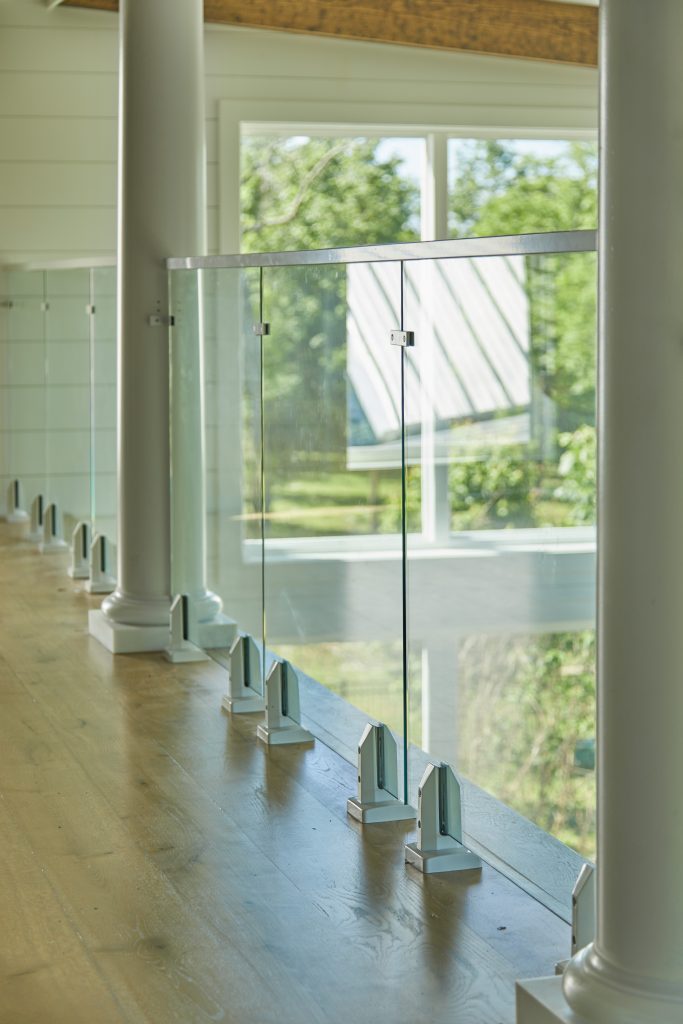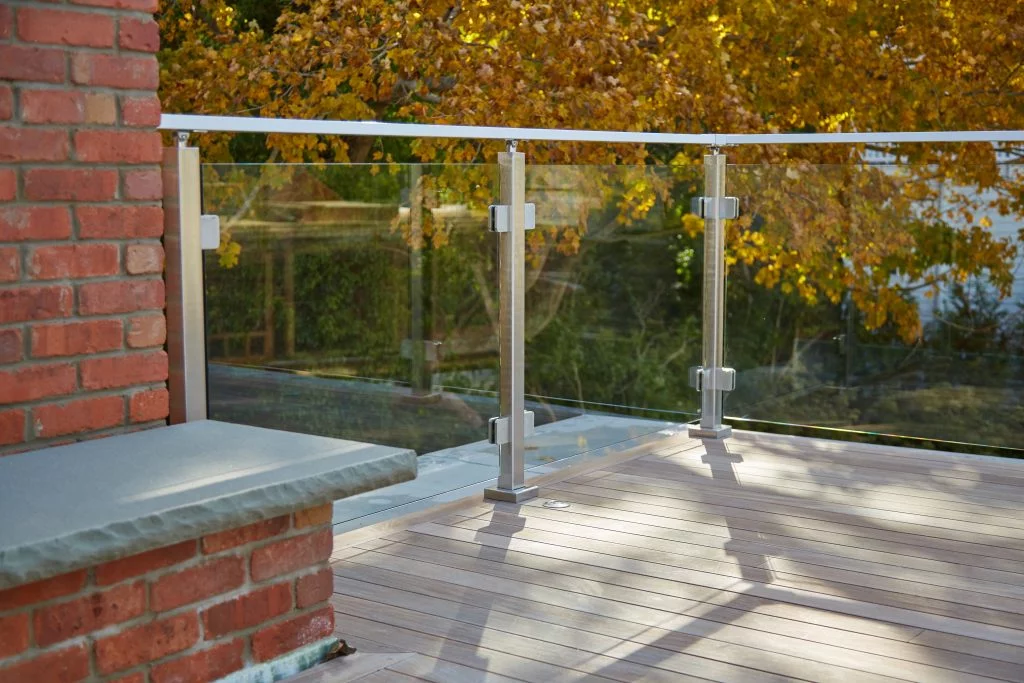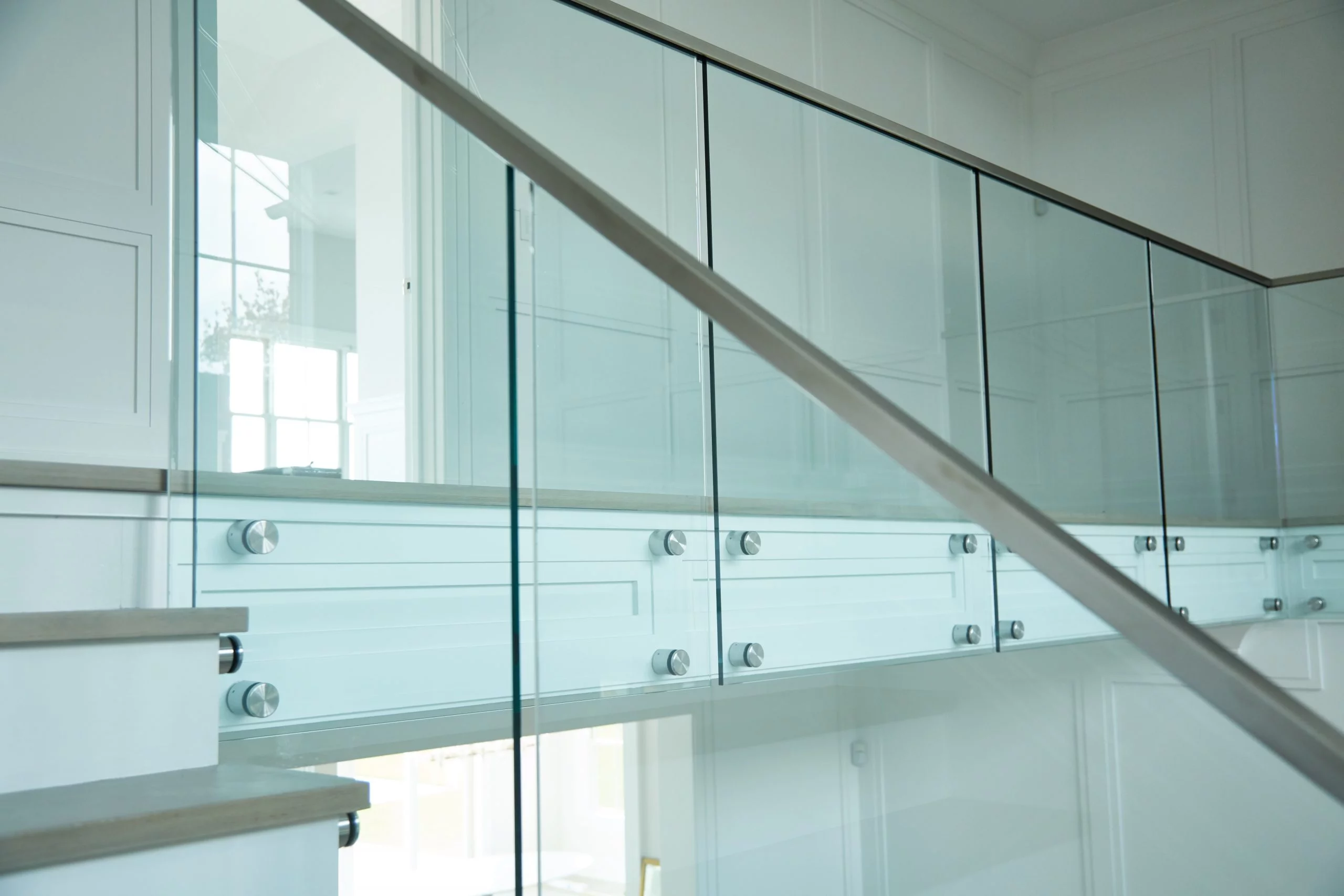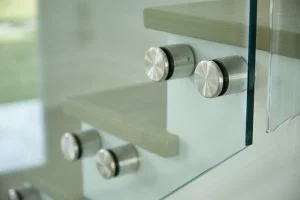The Differences Between Tempered & Laminated Glass

Choosing between tempered and laminated glass panels is an important step in buying a glass railing system. These two options are widely available within the glass railing industry but most people can’t differentiate between the two.
First, we’ll give you the easy answer before we get more specific. If you are looking for glass railing for a residential project, you’re generally going to be using tempered glass. If the project is commercial, you’ll almost always be using laminated glass. This is due to building codes. Looking for more than just tempered & Laminate, learn more about all types of glass.
According to the most recent International Building Codes, laminated glass is required for all commercial projects but tempered is sufficient for residential projects.
There are times when we recommend using laminated glass in residential situations, such as when the glass hangs over a well-traveled space or walkway. It’s also worth knowing that we are seeing many areas in Florida and other hurricane zones require laminated glass for exterior applications. We always recommend checking with your local code official to confirm your city’s requirements.
Tempered Glass
If you own a car or truck, you’re likely familiar with tempered glass. It’s used on most vehicles’ side windows. Tempered glass is strong and resilient to cracking and breaking—just think about the small rocks and pebbles that fly against people’s windows on a daily basis.
In the rare instances that tempered glass does break, it doesn’t just crack, it shatters into millions of little pieces. You have probably dropped a glass cup or other dish at some point and seen it break into a few knife-like shards. This type of glass is not tempered, meaning it will break much easier (tempered glass is 5-7x stronger than glass used in dishware) and pose safety risks when it breaks.
When it comes to glass railing, it’s absolutely necessary to use tempered glass. Imagine a 4’ wide by 3’ tall panel of glass breaking and falling over the edge of a deck or balcony. If someone happens to be walking below that area, they would much rather be showered with millions of tiny pieces of glass than large shards.
When using tempered glass, the glass panels could shatter, creating a fall risk. We usually recommend using framed glass systems that utilize a handrail attached to posts when using tempered glass. This is an extra safety measure that ensures there is still a guardrail in place should the glass shatter (see image below).
For more information on tempered glass railing cost
The Tempering Process
Glass panels must be heated to very high temperatures (usually around 1100 degrees Fahrenheit) and then immediately undergo rapid cooling to become tempered. A specialized tempering oven is used that incorporates forced air ducts for the rapid cooling. Once the glass has been tempered, it cannot be cut or resized as that would cause the entire glass panel to shatter.
Laminated Glass
Laminated glass is the strongest, safest glass panel option in the architectural railing market. And, just as you were already familiar with tempered glass, you likely are familiar with laminated glass as well. Nearly all front windshields on vehicles are made with laminated glass.
Laminated glass is made-up of two tempered glass panels that are bonded together with an interlayer. This interlayer ensures that, if one or both of the tempered glass panels shatter, the frame of the glass panel will stay intact. Think of a windshield that gets a crack in it: the windshield will almost always start to “spiderweb” but will not cave in on itself or lose its structure.
There are two main types of interlayers used in architectural glass railing: Ethylene-Vinyl Acetate (EVA) and Sentry Glass Plus (SGP). Generally, we only recommend using EVA for non-coastal applications and using SGP in coastal settings.
If you’re interested in utilizing a frameless glass system, like you can see below, we recommend using laminated glass. This is an extra precaution that ensures, should your glass system crack, no one would fall through the glass panels.
Nearly every new commercial project now uses laminated glass to guard against these risks. We believe that, as glass railing becomes a more prevalent option in residential applications, that code officials may start requiring laminated glass for these same reasons. However, tempered glass is still a good option in these situations.
If you’d like to talk to one of our glass team members, click the button below to fill out a design help form or call us directly at (574) 742-1030.


